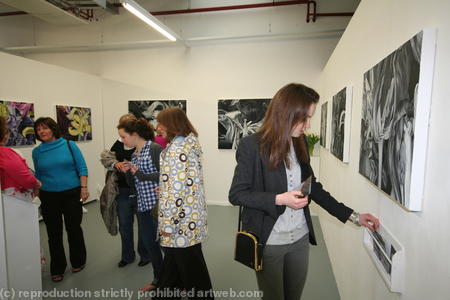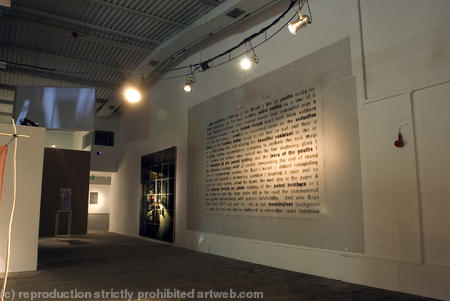A true landmark event – or ‘rite of passage’ – in the life of a professional artist is their university degree show. It may be the first and last time you ever formally exhibit your work to the public, or it could be the start of a glorious creative career, laden with media acclaim and prestigious prizes (hey – we’ll be optimistic for you if you aren’t!).
Although there is no universally right or wrong approach to take to a fine art degree show – much depending on your exact artistic practice, circumstances and ambitions – the following is useful advice.
Failed to prepare? Then prepare to fail
As with almost any endeavour in life, you will get more out of your degree show if you plan well ahead – and we aren’t just talking about buying some screws, a screwdriver and a spirit level.
Consider how you will market yourself, for instance. Have you already got a well-designed business card, complete with contact information that will still be relevant in years to come? If so, do you need to print a new run of cards? Do you have a website that you can refer interested parties to, or at least a Facebook ‘fan’ page? Are you prepared for any queries about purchasing your work?
So many important things for degree show preparation don’t become obvious until you have done it for yourself, or at least closely watched someone else do it. So, be sure to ask past graduates for advice and if your degree show is still a year or more away, volunteer to help out current final-year students with the fabrication of their shows.
Meet with your fellow final-year students regularly, so that everyone knows exactly what is happening with regard to such factors as who is exhibiting where, who is invigilating the show at which times and what more general publicity material may be needed.
Why not invite certain prominent local, regional or national art world figures, perhaps getting one of them to provide a foreword for the degree show catalogue?
Your show itself needs to be good – very good
Remember that your degree show only lasts for a short time, and that any one visitor will not necessarily have the time or inclination to visit again – so your show really does need to make the best possible impression at all times.
If, for example, you are a painter or printmaker, that might amount largely to such seemingly simple things as arranging your work in an advantageous manner, framing it professionally and providing a nice dispenser of business cards nearby – oh, and ensuring good lighting.
But for those with more demanding or complicated performance or installation work, it may be necessarily to negotiate with invigilators in advance to ensure that if something goes wrong – for example, a light bulb going out or damage caused by the wayward feet of visitors – there is some kind of arrangement for quickly remedying the problem.
Many artists provide accompanying information about their work, perhaps in a sign or label on the wall. One of the big issues here is ensuring that the language used to describe the work can be easily understood by visitors, while still doing justice to its complexity – not everyone has a PhD in the more arcane elements of contemporary art theory!
You may also provide a ‘guest book’ to gather visitor feedback and email addresses for your mailing list. However, you also shouldn’t underestimate the potential value of your fellow students as ambassadors for your work when they are invigilating in your absence. That’s all the more reason for you to be friendly with your ‘uni mates’ and work with them as a team, rather than treating them as competition to be vanquished!
Then, there’s the thorny matter of selling your work. You don’t necessarily need to have a price list ready at your degree show – indeed, it may be better if you don’t, given the potential for often inexperienced art buyers to be deterred by overly high or low prices. However, you should at least have a certain level of commercial awareness so that you are comfortable with negotiating prices with any suitors to your work.
If in doubt about your prices, compare them to those of similar graduate artists or ask your tutors for advice. Consider what kind of price would befit the amount of time, energy and money invested in a given piece, while still being sufficiently low to attract a market for your work.
The work doesn’t stop when your show does…
…indeed, it may be only just starting. For starters, you already have a ready-made contacts list in the form of your fellow students, so why not arrange for a few of you to put together a follow-up exhibition elsewhere in your town or city, or even (if contacts and resources allow) a major art capital like London or New York?
What about submitting your work to group exhibition opportunities, subscribing to art world newsletters and building up your online presence? Now should also be the time when you contemplate how and where to continue your practice from here. Will you need to get yourself on the waiting list for a studio, for example, or could you work from home?
Whatever you do, don’t allow that degree show momentum to dissipate! It may be the only opportunity that you ever get to flaunt your work to so many interested people and get your artistic career off to a truly flying start.











